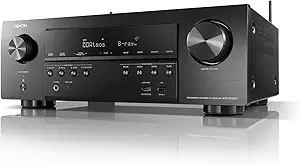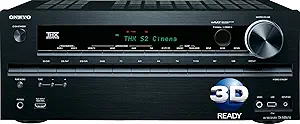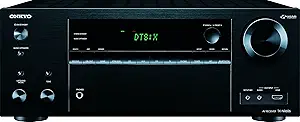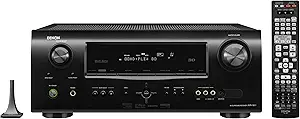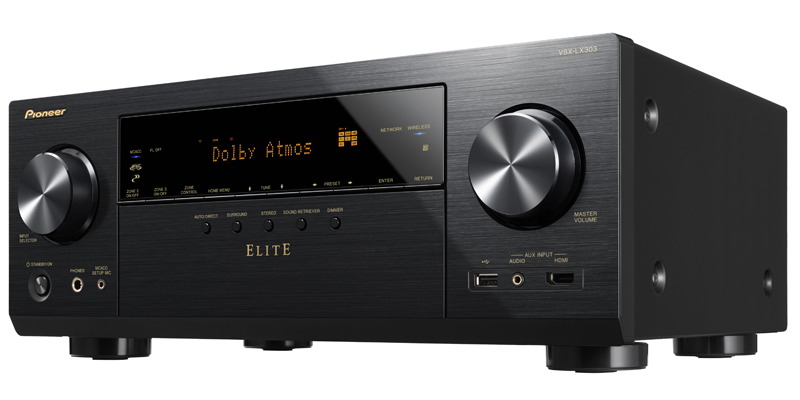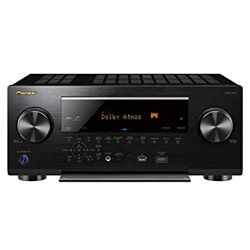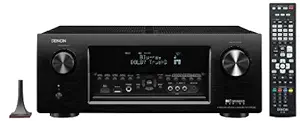Pioneer VSX-532 VS
Pioneer VSX-531

- Brand - Pioneer
- Updated_at - 2023-12-18 19:07:23
- USB - 1
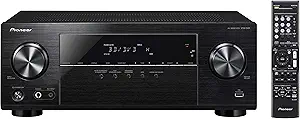
- Brand - Pioneer
- Updated_at - 2023-12-18 19:07:23
- USB - 1
Pros & Cons
Pioneer VSX-532
VSPros
- I am glad that built-in decoders play almost all of my files properly. It is 100% worth of its price.
- The total power output is 210 Watts, which is enough for enjoying proper sounding in my living room.
- Not very important, but anyway, it can be both auto/manually switched on.
Cons
- It does not have auto power off, so it bothers me each time to turn it off manually.
- For me not so important, but note that it does not have networking capabilities.
- The main disadvantage for me is that it cannot be controlled via a smartphone.
Pioneer VSX-531
VSPros
- Built-in decoders: DTS-HD, Dolby True HD and digital plus that can play almost any kind of files properly.
- With built-in Bluetooth now I can stream music from a phone.
- Build in clock and sleeping timer are useful benefits since it switches off in set up time.
- Personally, I have most devices on HDMI ports and only a few analogs, but it has almost all connector types, including TOSLINK and RCA.
Cons
- No Dolby Atmos, but at such a price it couldn’t have one.
- Notice that it does not support the Apple lossless format, but I do not have one.
Specifications
Groups
| Specification | Pioneer VSX-532 | Pioneer VSX-531 |
|---|---|---|
| Connector Type | ||
| Av Inputs | 2 | 2 |
| Usb | 1 | 1 |
| Subwoofer Outputs | 1 | 1 |
| Coaxial Digital Outputs | has not | has not |
| Optical Digital Outputs | has not | has not |
| Hdmi Outputs | 1 | 1 |
| Hdmi Inputs | 4 | 4 |
| Coaxial Digital Inputs | 1 | 1 |
| Optical Digital Inputs | 1 | 1 |
| Phones | 1 | 1 |
| Additional Features | ||
| A-b Speaker Switch | ||
| Dual-zone Capability | ||
| Pure Direct Mode | ||
| Auto Power Off | ||
| Bi-amplifying | ||
| Audio Return Channel (arc) | ||
| Apple Air-play Support | ||
| Advanced Sound Retriever (asr) Technology | ||
| Three-zone Capability | ||
| Smartphone Remote Control | ||
| Functions | ||
| Internet Radio | ||
| Digital Player | ||
| Network Audio Player | ||
| Power Device | ||
| Operational Power Consumption | 210 W | 210 W |
| Standby Power Consumption | 0.35 W | 0.45 W |
| Audio Formats | ||
| Wma | ||
| Wav | ||
| Mp3 | ||
| Flac | ||
| Apple Lossless | ||
| Aiff | ||
| Aac | ||
| Connectivity Interfaces | ||
| Bluetooth | ||
| Ieee 802.3u | ||
| Ieee 802.3 | ||
| Wi-fi | ||
| Signal Processing | ||
| Upscaling Via Hdmi | up to 4K | up to 4K |
| 3d Pass-through | ||
| Video Conversion/scaling | HDMI to HDMI scaling | HDMI to HDMI scaling |
| Hdmi Pass-through | up to 4K | up to 4K |
| Radio | ||
| Preset Station | 30 | 30 |
| Tuner Bands | AM/FM | AM/FM |
| Tuner Type | digital | digital |
| Clock | ||
| Sleep Timer | ||
| Built-in Clock | ||
| Built-in Display | ||
| Colour | black | black |
| Type | fluorescent | fluorescent |
| Amplifier | ||
| Total Harmonic Distortion | 0.08 % | 0.08 % |
| Frequency Response | 20 Hz-20 kHz | 20 Hz-20 kHz |
| Output Impedance Per Channel | 6 Ohm, 8 Ohm | 6 Ohm, 8 Ohm |
| Output Power Per Channel | 150 W, 80 W | 140 W, 80 W |
| Total Output Power | 210 W | 140 W |
| Sound Features | ||
| Digital Content Protection | HDCP 2.2 | HDCP 2.2 |
| Surround System Class | 5.1 channel | 5.1 channel |
| Surround Sound Effects | Front Stage Surround Advance. Headphone Surround (V.S.S.) | Front Stage Surround Advance. Headphone Surround (V.S.S.) |
| Audio D/a Converter | 24bit / 192kHz | 24bit / 192kHz |
| Built-in Decoders | ||
| Dolby True Hd | ||
| Dolby Surround | ||
| Dolby Digital Plus | ||
| Dolby Atmos | ||
| Dts:x | ||
| Media Content Source | ||
| Usb-host | ||
| Network | ||
| Bluetooth | ||
| Dimensions | ||
| Dimensions | 12.6 x 17.1 x 6.6 inches | 12.6 x 17.1 x 6.6 inches |
| General | ||
| Brand | Pioneer | Pioneer |

